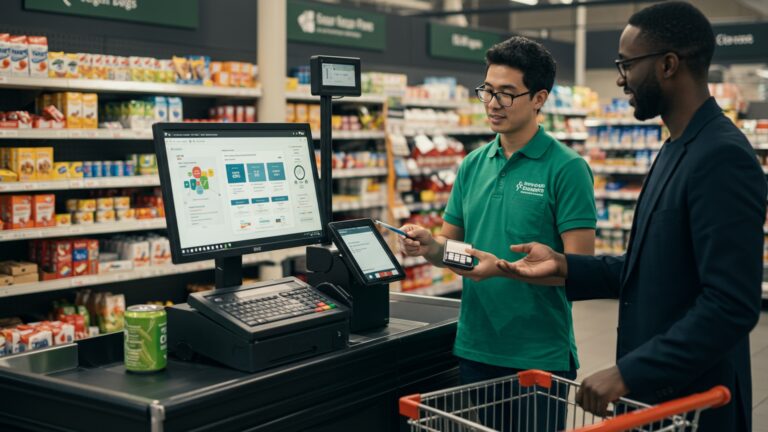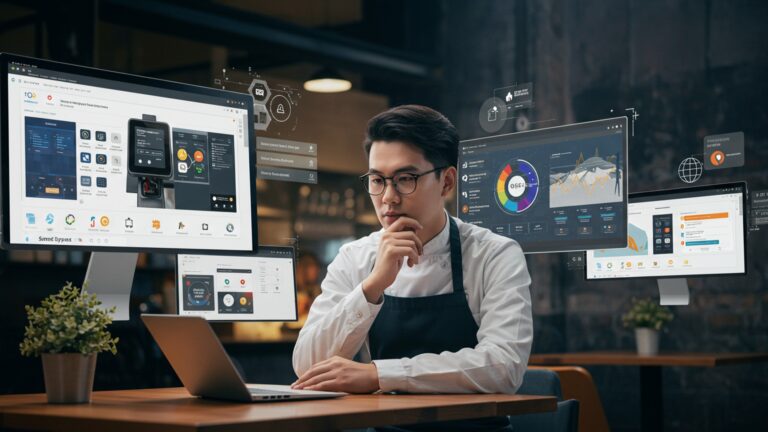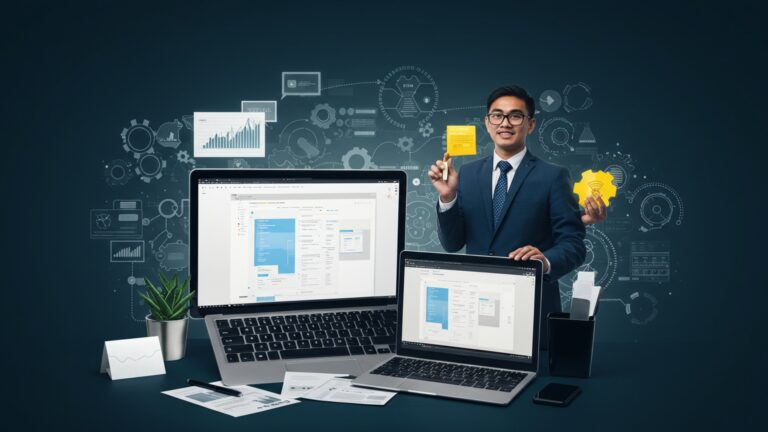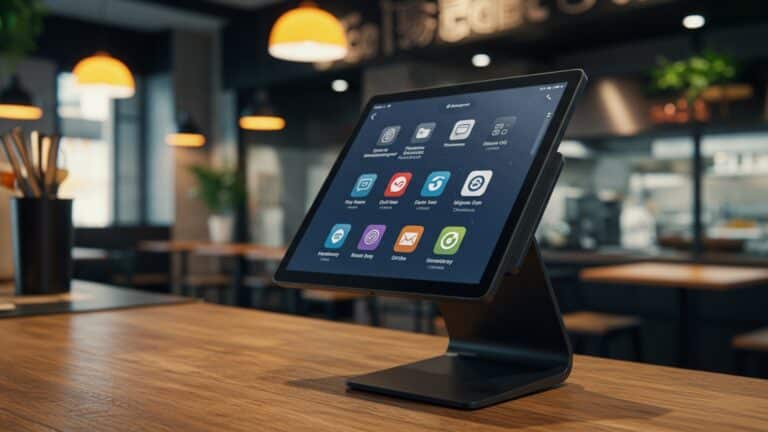How to Choose the Best Restaurant POS System 5 Key Factors
In today’s fiercely competitive culinary landscape, selecting the optimal restaurant POS software is a critical strategic imperative, extending far beyond mere transaction processing. Modern operators navigate a confluence of demands, from streamlining inventory management across diverse menus to seamlessly integrating dynamic online ordering and third-party delivery platforms. A truly effective restaurant POS system acts as the operational backbone, empowering data-driven decisions through real-time sales analytics, enhancing staff efficiency. cultivating robust customer loyalty programs. This indispensable technology now transforms raw transactional data into actionable insights, directly impacting profitability and elevating the entire guest experience.
Understanding Restaurant POS Software: The Foundation
Choosing the right technology for your restaurant is paramount in today’s fast-paced culinary world. At the heart of a successful operation lies your Point of Sale (POS) system. But what exactly is Restaurant POS software? In simple terms, it’s the central nervous system of your establishment, a sophisticated system that goes far beyond just processing transactions. It’s a combination of hardware (like touchscreens, card readers, receipt printers) and software that manages everything from order taking and payment processing to inventory, staff management. detailed reporting.
Modern Restaurant POS software is designed to streamline operations, enhance customer experience. provide critical data for business growth. It’s no longer just a cash register; it’s a comprehensive management tool. For instance, imagine a server taking an order on a handheld device. That order instantly appears in the kitchen, avoiding miscommunication and speeding up service. This seamless flow is a direct benefit of an integrated POS system.
1. Scalability and Flexibility: Growing with Your Business
One of the most critical considerations when selecting a Restaurant POS software is its ability to scale and adapt. Your business isn’t static; it will evolve. your POS system needs to keep pace. Scalability refers to the system’s capacity to handle increased demand, more users, or additional locations without significant overhauls or performance degradation. Flexibility, on the other hand, speaks to its adaptability to different operational models or changing business needs.
Consider a small, independent coffee shop. Initially, a basic system might suffice. But, if that coffee shop plans to open a second location, introduce a loyalty program, or expand its menu with complex kitchen workflows, a scalable POS system is essential. A system that forces you to completely switch providers or re-invest heavily in new hardware and software every time you grow is a significant long-term liability. Look for Restaurant POS software that offers tiered plans or modular additions, allowing you to add features and terminals as needed.
For example, a robust system like Toast POS or Square for Restaurants is known for its ability to cater to a single food truck and scale up to multi-location fine dining establishments. This adaptability is crucial. A system that works perfectly for a quick-service restaurant might be clunky and inefficient for a full-service dining experience requiring advanced table management and course-by-course ordering. Ensure the chosen system can accommodate your current needs while providing a clear upgrade path for future expansion or changes in your service model.
2. Comprehensive Feature Set and Seamless Integrations
The core functionality of any Restaurant POS software includes order entry, payment processing. receipt generation. But, the true power of a modern system lies in its extended feature set and its ability to integrate with other essential business tools. A fragmented approach, where you use separate software for inventory, online orders. accounting, creates inefficiencies and data silos.
Key features to look for in your Restaurant POS software include:
- Inventory Management
- Employee Management
- Customer Relationship Management (CRM) & Loyalty Programs
- Online Ordering & Delivery Management
- Reporting & Analytics
- Table Management
Tracks ingredients, manages vendors, alerts for low stock. helps control food costs.
Time clock, shift scheduling, payroll integration. performance tracking.
Gathers customer data, manages loyalty points. supports targeted marketing efforts.
Integrates with your website and third-party delivery platforms (e. g. , DoorDash, Uber Eats) to streamline off-premise orders.
Provides detailed insights into sales trends, peak hours, popular menu items, labor costs. more. This data is invaluable for making informed business decisions.
For full-service restaurants, this includes tracking table status, managing reservations. assigning servers.
Beyond these, consider crucial integrations. Your Restaurant POS software should ideally connect with:
- Accounting Software
- Reservation Systems
- Third-Party Delivery Platforms
- Payroll Services
(e. g. , QuickBooks, Xero) to automate financial reporting and reconciliation.
(e. g. , OpenTable, Resy) for seamless front-of-house operations.
To consolidate orders from various services directly into your POS.
To simplify employee compensation.
Imagine a busy Friday night. A well-integrated Restaurant POS software allows an online order placed via your website to immediately appear on the kitchen display system (KDS). Simultaneously, your inventory levels are updated. sales data is automatically pushed to your accounting software. This level of automation reduces manual errors, saves labor costs. ensures smooth operations, even during peak times. A system that requires manual data entry between different platforms is a drain on resources and a source of frustration.
3. Ease of Use and Training Requirements
The most feature-rich Restaurant POS software is useless if your staff can’t operate it efficiently. Ease of use is a non-negotiable factor. A clunky, unintuitive interface leads to slower service, increased errors. higher training costs. This directly impacts both your bottom line and your customer experience.
When evaluating systems, pay close attention to the User Interface (UI) and User Experience (UX). Is the layout logical? Are common tasks, like taking an order or processing a payment, just a few taps away? Can new menu items be added easily? A good POS system should be intuitive enough for a new hire to grasp the basics within a short training session, perhaps 30 minutes to an hour, rather than days.
I once consulted for a restaurant that had recently switched to a new, supposedly “advanced” POS system. While it boasted many features, its interface was so convoluted that servers consistently made mistakes, leading to incorrect orders, delayed service. significant customer complaints. The owner realized that the learning curve was too steep, especially with high staff turnover common in the industry. They eventually reverted to a simpler system, sacrificing some advanced features for operational efficiency and staff satisfaction. This highlights that a system’s true value isn’t just in what it can do. in how easily it can do it.
Look for systems that offer:
- Intuitive Touchscreen Interfaces
- Visual Menu Customization
- Quick Order Entry
- Clear Reporting Dashboards
Mimicking the familiarity of smartphones and tablets.
Easy to organize categories, add photos. apply modifiers.
Minimizing steps to complete a transaction.
Easy to comprehend key metrics at a glance.
Always request a demo or, even better, a free trial period. Let your actual staff test the system during these evaluations. Their feedback will be invaluable.
4. Cost Structure and Customer Support
Understanding the total cost of ownership (TCO) for your Restaurant POS software is crucial. It’s not just about the initial purchase price; there are several components to consider:
- Hardware Costs
- Software Subscription Fees
- Payment Processing Fees
- Installation & Training Fees
- Ongoing Support & Maintenance
Tablets, terminals, card readers, receipt printers, kitchen display systems (KDS). These can be purchased outright or leased.
Most modern POS systems operate on a monthly or annual subscription model. These often vary based on features, number of terminals, or locations.
These are typically a percentage of each transaction, plus a small per-transaction fee. These can significantly impact your bottom line, so compare rates carefully. Some POS providers offer in-house payment processing, which can sometimes simplify billing and support.
Some providers charge for initial setup, on-site installation. comprehensive staff training.
While often included in subscription fees, clarify what level of support is provided.
Here’s a simplified comparison of typical pricing models:
| Pricing Model | Description | Pros | Cons |
|---|---|---|---|
| Subscription-based | Monthly or annual fee per terminal/location. | Lower upfront cost, continuous updates, often includes support. | Ongoing expense, can accumulate over time. |
| One-time Purchase (Legacy) | Large upfront cost for software license. | No recurring software fees. | High initial investment, updates often cost extra, support may be limited. |
| Transaction-based | Lower or no monthly fee, higher payment processing rates. | Good for low-volume businesses, no fixed monthly overhead. | Costly for high-volume businesses, less predictable. |
Beyond cost, the quality and availability of customer support cannot be overstated. When your Restaurant POS software goes down during peak dinner rush, you need immediate assistance, not a 24-hour callback window. Look for providers offering:
- 24/7 Support
- Multiple Contact Channels
- Dedicated Account Manager
- Comprehensive Knowledge Base
Essential for businesses that operate outside standard office hours.
Phone, email, live chat.
For larger operations, a single point of contact can be invaluable.
Self-service resources for common issues.
“Chef’s Table,” a popular bistro, experienced a complete POS system outage on a Saturday night due to a software glitch. Their previous provider offered only email support with a 12-hour response time. The bistro had to resort to manual order taking and cash-only payments, leading to chaos, lost sales. frustrated customers. After this incident, they switched to a provider known for its 24/7 phone support and on-call technicians, understanding that reliable support is an investment, not an expense.
5. Security and Reliability: Protecting Your Business and Customers
In an era of increasing cyber threats, the security and reliability of your Restaurant POS software are paramount. You’re handling sensitive customer data (credit card details) and critical business data (sales figures, inventory). A breach or system failure can have devastating consequences, including financial loss, reputational damage. legal liabilities.
Key security features to prioritize:
- PCI DSS Compliance
- Data Encryption
- User Access Controls
- Cloud-Based Security
- Two-Factor Authentication (2FA)
This is a set of security standards designed to ensure that all companies that process, store, or transmit credit card details maintain a secure environment. Your POS system and payment processor must be PCI compliant.
All sensitive data, especially payment insights, should be encrypted both in transit and at rest.
The ability to set granular permissions for different staff roles (e. g. , servers can’t access payroll data).
If using a cloud POS, inquire about the provider’s data center security, backup protocols. disaster recovery plans.
Adds an extra layer of security for administrative logins.
Reliability refers to the system’s uptime and its ability to function even in adverse conditions. Consider:
- Offline Mode Capabilities
- Redundant Systems & Backups
- Hardware Durability
What happens if your internet connection drops? Can the system continue to take orders and process payments (to be synced later)? This is critical for business continuity.
How does the provider ensure data isn’t lost and the system remains operational?
Restaurant environments can be harsh (spills, drops). Ensure any proprietary hardware is robust.
Many modern cloud-based Restaurant POS software systems offer an “offline mode.” This means that even if your internet connection goes down, your local terminals can continue to process orders, save data. sometimes even process credit card transactions (which are then queued and processed once connectivity is restored). This prevents a complete operational halt, allowing you to continue serving customers and minimize revenue loss. When evaluating, ask specific questions about how long the system can operate offline, what functionalities are retained. how data is synced once online.
Choosing a Restaurant POS software with robust security and high reliability isn’t just about protecting your business; it’s about protecting your customers’ trust and ensuring uninterrupted service. A system that frequently crashes or is vulnerable to security threats is a liability no restaurant can afford.
Conclusion
Choosing the ideal restaurant POS system isn’t merely selecting software; it’s about investing in your operation’s future efficiency and profitability. Remember, the five key factors—scalability, integration, ease of use, customer support. cost—are your compass. Don’t just chase the flashiest features; instead, envision your busiest Friday night. Will the system empower your servers to swiftly split a check, or will it cause a bottleneck? My personal tip: always prioritize a system that offers robust, real-time inventory management. I’ve seen firsthand how accurate stock data prevents waste and boosts margins, a critical aspect of today’s lean operations. As technology continues to evolve, with trends like mobile ordering and integrated loyalty programs becoming standard, selecting a cloud-based, adaptable system is paramount. Think beyond today’s needs and consider tomorrow’s growth, ensuring your chosen POS can seamlessly evolve with your restaurant. Ultimately, this decision is about empowering your team, streamlining operations. delivering an unforgettable experience to every guest. Take the demo, ask the tough questions. choose wisely—your business will thank you for it. For further insights into industry trends, explore resources like [Restaurant Technology News](https://www. restaurantbusinessonline. com/technology).
More Articles
Optimizing Your Restaurant Inventory Management
The Rise of QR Code Menus in Restaurants
Boosting Table Turnover with Efficient Service
Understanding Payment Processing Fees for Restaurants
Staff Training Tips for New Restaurant Technology
FAQs
What’s the very first thing I should consider when looking for a new restaurant POS?
Kick things off by making a list of your non-negotiable features. Do you absolutely need robust inventory tracking, integrated online ordering, or advanced table management? Knowing your specific operational needs will really help narrow down your options from the start.
My staff isn’t super tech-savvy. How vital is it that the POS system is easy to learn and use?
It’s incredibly essential! A clunky or complicated system can slow down service, lead to order errors. frustrate your team. Always look for intuitive interfaces, clear layouts. minimal training time. A user-friendly system saves everyone a lot of headaches and keeps things running smoothly.
POS systems seem like a big investment. What costs should I really be looking out for?
Don’t just focus on the monthly subscription fee. You need to factor in hardware costs (terminals, printers, card readers), any installation or setup charges. ongoing support fees. Some systems also have hidden costs for certain features or higher processing rates, so always ask for a complete breakdown of all potential expenses.
I use a bunch of other apps for my restaurant, like for deliveries and accounting. Will a new POS system play nice with those?
Great question! Integration capability is absolutely crucial. A good POS system should seamlessly connect with your existing tools, such as online ordering platforms, third-party delivery services, accounting software. loyalty programs. This prevents manual data entry and ensures all your systems work together efficiently.
What if the system crashes in the middle of a busy dinner rush? What kind of support should I expect?
Reliable support is non-negotiable. Look for vendors who offer 24/7 customer service, ideally with multiple contact options like phone, chat, or email. Check their reputation for quick response times and effective troubleshooting. You also want a system known for its stability and high uptime – downtime during peak hours is a nightmare.
My restaurant might grow or change in the future. Can my POS system keep up?
Scalability is a key factor. Choose a system that can easily adapt to your evolving needs, whether that means adding more terminals, expanding to multiple locations, or incorporating new features like self-ordering kiosks. A flexible system means you won’t have to go through this whole process again too soon.
Is there any way to try out a POS system before fully committing to it?
Absolutely! Many reputable vendors offer free demos or trial periods. you should definitely take advantage of them. This allows you and your staff to get hands-on with the system, test its features in a real-world scenario. make sure it feels like the right fit before making a significant investment.





